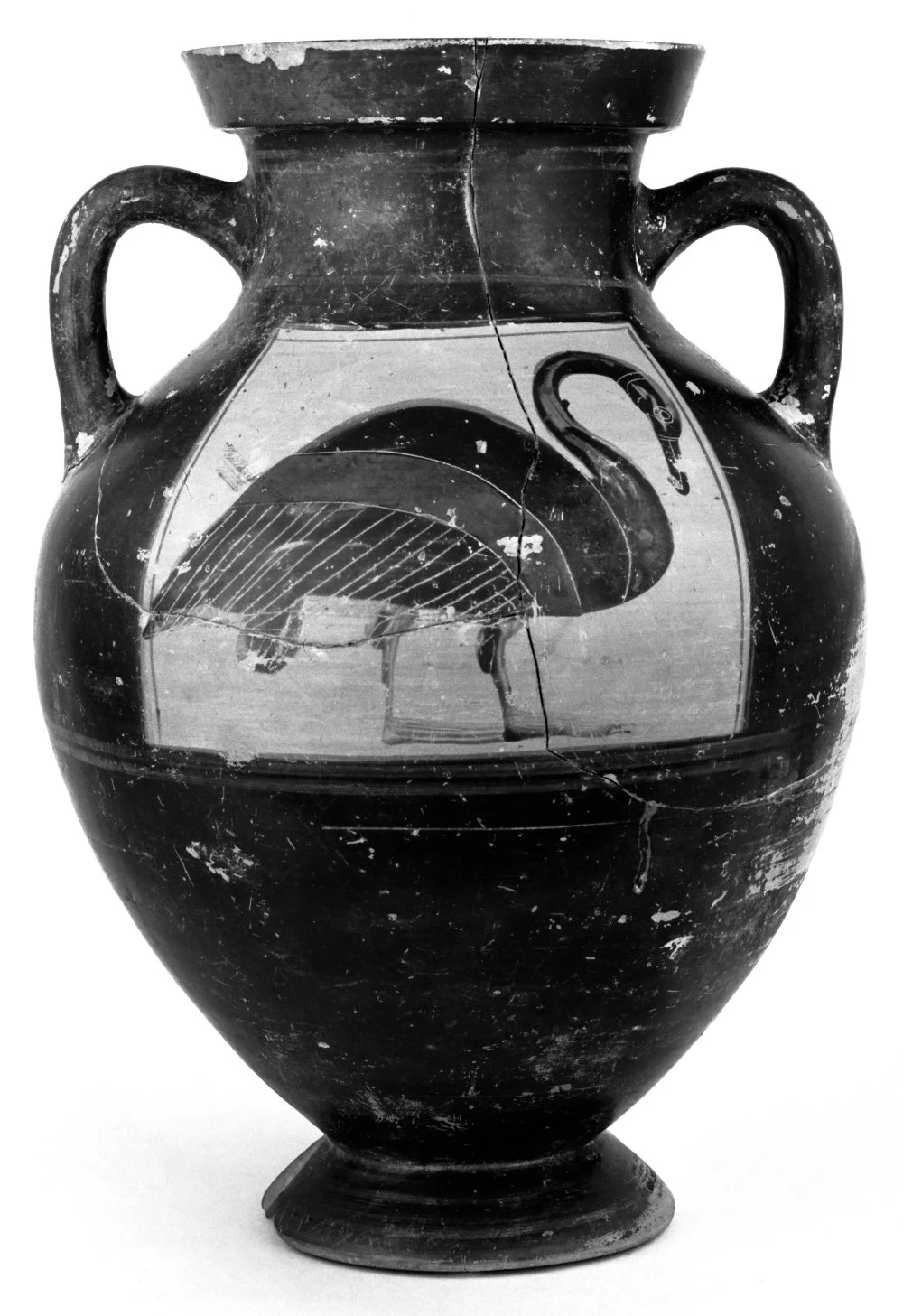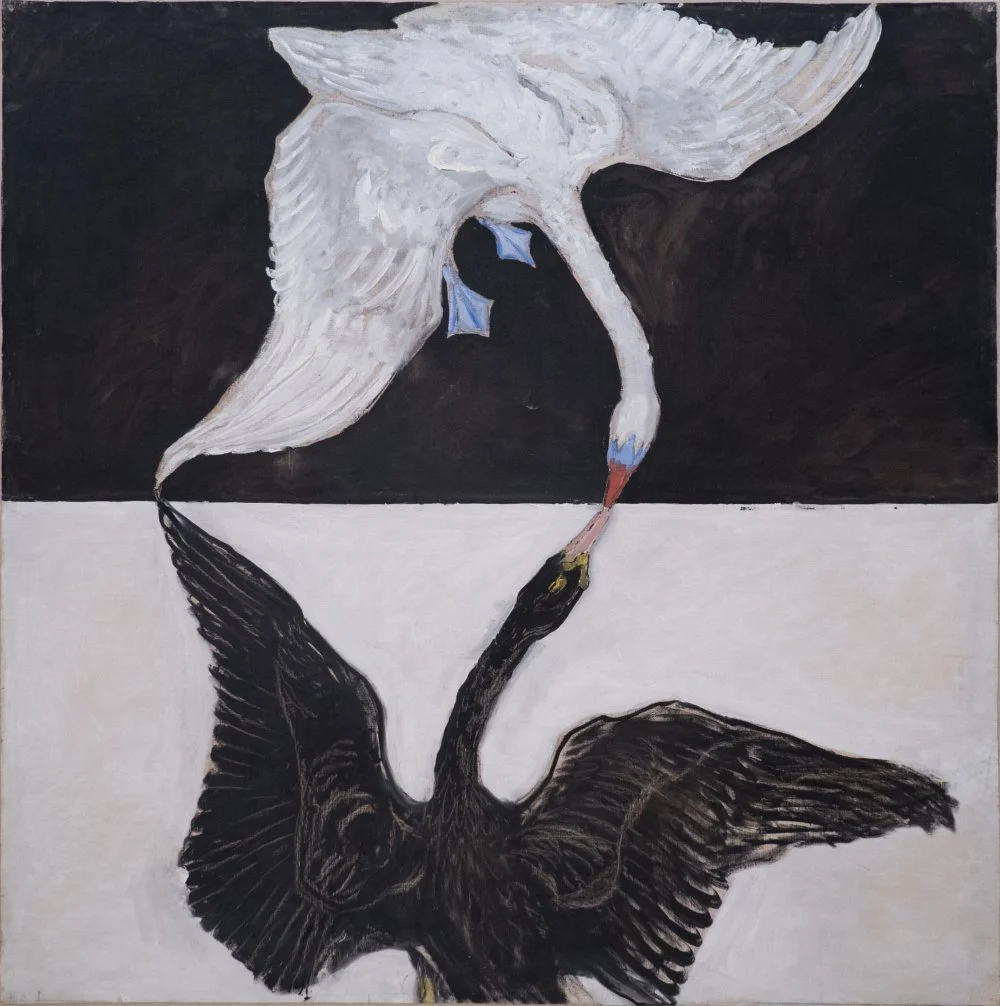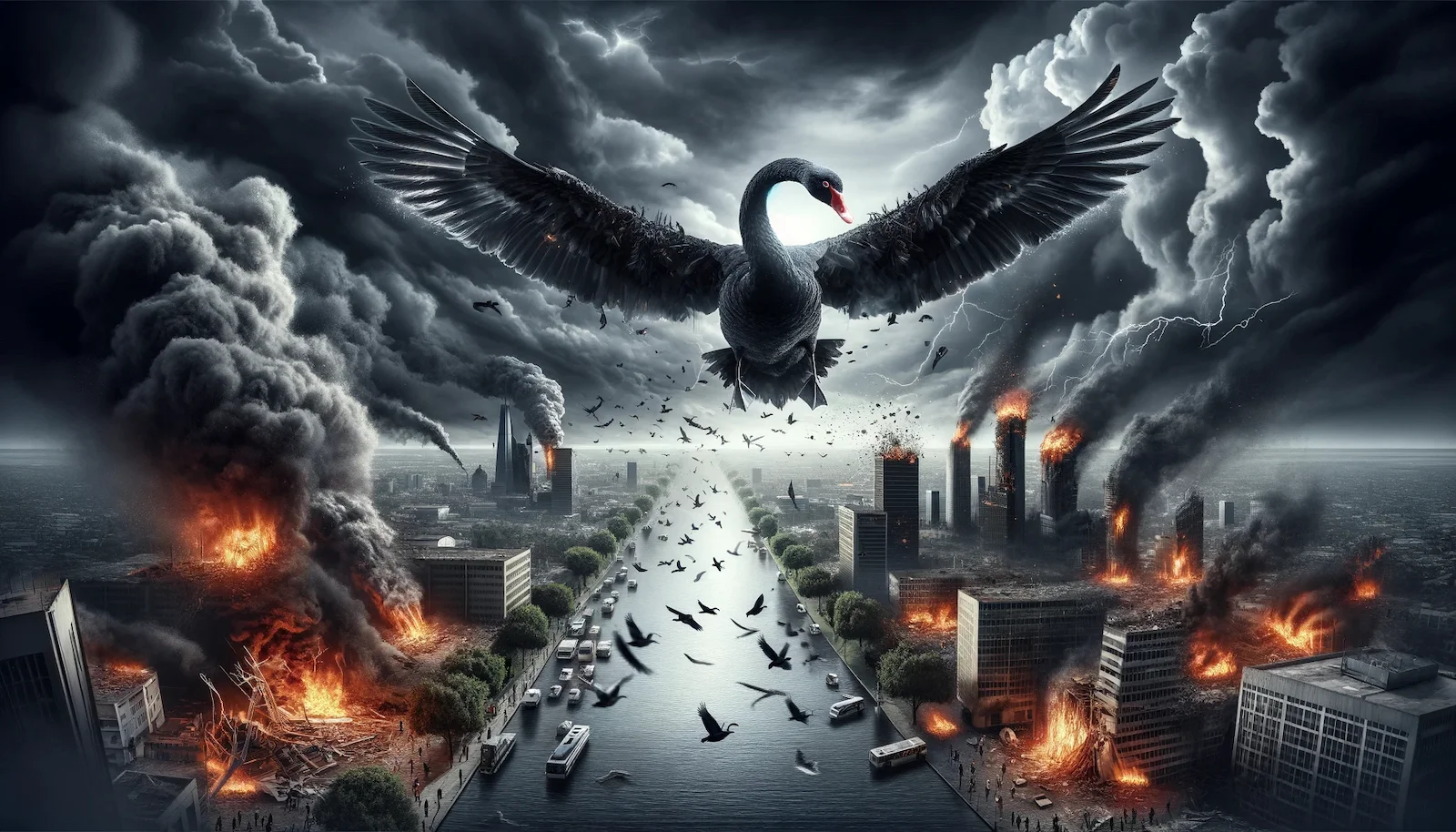Not every language has a term to denote something that is inconceivable, impossible, and unimaginable.
The Japanese, for example, do have such an expression: jellyfish bones. The ancient Romans had a similar idiom, and they used the phrase ‘black swan’. For instance, in his sixth satire (1656, translated by D. Nedovich), the Roman poet Juvenal writes :
‘In short, the rarest bird on the earth, like a black swan—
Will you stand a wife who possesses all virtues?’

Attic Black-Figure Amphora. 550 B.C./ Getty museum
For almost the entirety of European history, humanity believed that swans were only white, and a ‘black swan’ was something mythical that shattered all our long-held stereotypes and ideas. However, after the discovery of Australia, it turned out that black swans (Cygnus atratus) indeed exist. They were spread around the world in considerable numbers, and now a black swan hardly seems any more exotic than its snow-white cousin.
However, the perception of the black swan has changed drastically. The evil sorcerer of Swan Lake, the renowned ballet written by Pyotr Ilyich Tchaikovsky in 1876, is surrounded by black swans for a reason.
The black swan has transformed into a sinister symbol of an unpredictable, chaotic future. It embodies a reality that cannot be foreseen. It is in this sense that the concept of the black swan appears in the works of the American philosopher-economist Nassim Taleb, who studied the impact of rare and unpredictable events on society, economy, and history.

Hilma af Klint. Group IX/SUW, The Swan, 1915/Wikimedia Commons
